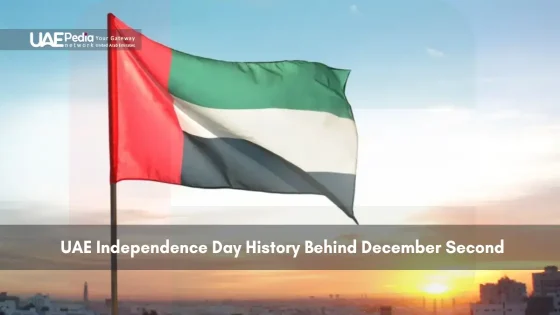Have you ever thought about how the UAE grew crops in the desert for centuries? The UAE’s farming history shows human creativity and strength. From old oasis farming to new vertical gardens, the UAE has grown a lot in farming.
But what were the old ways that started today’s strong farming in the UAE?
The UAE’s farming past is both rich and surprising. Even though it imports over 90% of its food now, the UAE used to farm a lot. These old farming ways helped people live and shaped the UAE’s culture.
From Al Ain’s green oases to Ras Al Khaimah’s coastal farms, farming has always been key to Emirati life.
In a place where water is more valuable than oil, farmers found smart ways to use little water. They built the falaj system, a network of underground channels. This old tech, still seen in the UAE, shows how early settlers balanced human needs and nature.
Historical Development of Agriculture in the Emirates
The UAE’s farming history goes back centuries. It has shaped the nation’s culture and economy. Farming has been key to the Emirates’ growth.
Early Agricultural Settlements in Ras Al Khaimah and Al Ain
Ras Al Khaimah and Al Ain are important in UAE’s farming history. They have natural water sources, making them great for farming. People grew dates, veggies, and fruits there, starting the UAE’s farming legacy.
Role of Oasis Farming in Traditional UAE Life
Oasis farming was vital for traditional UAE life. Before oil, farming was the main way people got food. These desert oases supported communities, helping trade and cultural exchange along the Persian Gulf.
Sheikh Zayed’s Vision for Agricultural Development
Sheikh Zayed bin Sultan Al Nahyan, the UAE’s founder, saw farming’s value. He turned desert lands into fertile fields. His leadership brought modern farming to each Emirate, mixing old ways with new.
Now, the UAE faces new farming challenges. With a big population increase and food imports making up 85% of what people eat, the UAE wants to grow more food. It aims to increase domestic food production by 30% to 40% by 2051. This shows how UAE farming is evolving, from its past to a high-tech future.
UAE Traditional Agriculture: Methods and Techniques

The United Arab Emirates has a rich history of farming. It’s adapted to its dry climate. Even though most people live in cities now, old farming ways still shape new ones.
Traditional Irrigation Systems and Water Management
In the UAE, old irrigation systems were key. The falaj system, a network of hidden channels, was vital for farming in oases. These methods helped save water, which is very precious.
Date Palm Cultivation Heritage
Date palms have always been important in UAE farming. Farmers used special tools and methods for planting, pollination, and picking dates. Today, some farms use hydroponics to save up to 70% water, showing how old ways meet new tech.
Traditional Livestock Management Practices
Bedouin life and farming in the UAE relied on livestock. Herders managed camels, goats, and sheep with ancient skills. These skills are still important today, even though most livestock comes from other countries.
| Traditional Method | Modern Adaptation |
|---|---|
| Falaj irrigation system | Hydroponics (87 commercial farms) |
| Oasis farming | Vertical farming |
| Local livestock rearing | Import-based livestock industry |
Today, the UAE imports a lot of food, like rice, wheat, and dairy. But, the country is also investing in new farming tech. For example, a wheat farm in Sharjah will grow on 1,400 hectares by 2025. It shows how old wisdom and new tech come together in UAE farming.
Environmental Challenges and Traditional Solutions
The United Arab Emirates has to deal with tough farming challenges because of its dry climate. Bedouin practices have helped farmers find ways to overcome these problems. They have come up with smart ways to grow crops and manage water.
Adapting to Arid Climate Conditions
Farmers in the UAE have learned to grow crops in the desert’s extreme heat. They use greenhouses made from palm fronds to protect plants from the sun and sandstorms. These greenhouses create a special environment that lets plants grow all year round.
Water Conservation Strategies
Water is very scarce in the Middle East. UAE farmers have found clever ways to save water:
- They use underground irrigation to cut down on water lost to evaporation.
- They choose plants that don’t need much water.
- They use falaj systems to spread water out efficiently.
Soil Management in Desert Agriculture
Soil in the desert is hard to work with. Farmers have used crop rotation for years to keep the soil healthy. This method helps fight off salt and makes the soil better for growing crops, making farming in the UAE sustainable.
| Traditional Practice | Benefit |
|---|---|
| Crop Rotation | Improves soil fertility |
| Palm Frond Greenhouses | Protects crops from harsh weather |
| Falaj Irrigation | Efficient water distribution |
Old trade in agriculture brought in new crops and ways to farm. These old methods have helped create modern, green farming in the Emirates. They mix old wisdom with new ideas.
Transition from Traditional to Modern Farming
The UAE moved from farming to oil, changing its economy. This change brought new ways to farm. Now, the UAE uses the latest farming methods to ensure food and protect the environment.
Hydroponics is a big change in farming here. It uses much less water than old farming ways. The biggest vertical farm in the UAE grows a lot of greens, using very little water.
The government helps farmers with money, research, and learning. They even published a book on old and new farming ways. This shows the UAE’s commitment to farming that’s good for the planet.
Now, farms are even in cities. In Dubai, a farm grows lots of strawberries. The UAE also grew saffron for the first time, showing how farming has changed.



















